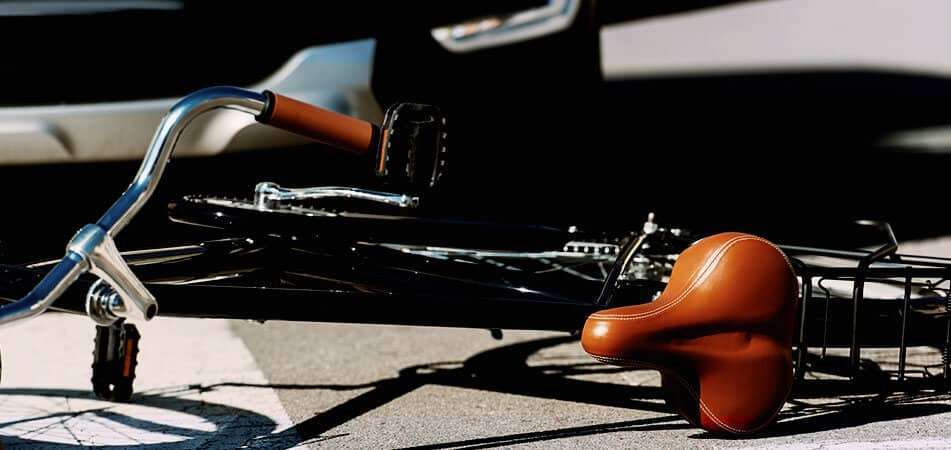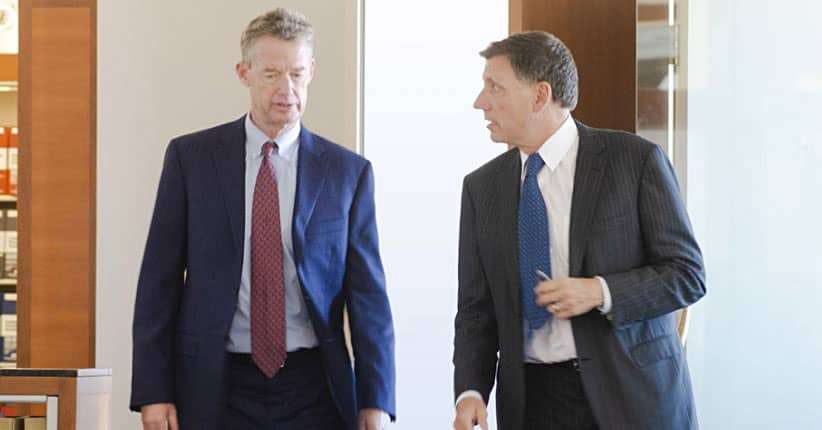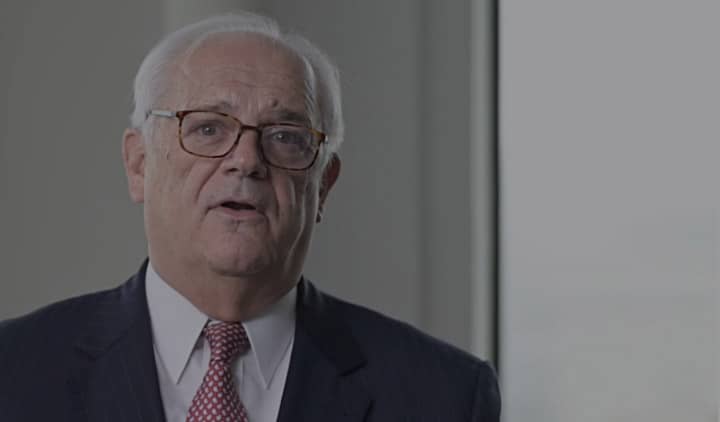Experienced Bicycle Injury Attorneys Serving San Francisco, CA Clients
Walkup, Melodia, Kelly & Schoenberger have highly experienced bicycle accident attorneys in the Bay Area region, in addition to helping clients throughout the entire state of California. Several of our bicycle injury attorneys are avid cyclists, and the Walkup law firm is a sponsor of both the San Francisco and Silicon Valley Bicycle Coalitions. A San Francisco Bicycle Accident Lawyer supports the Bicycle Coalition’s efforts to put a spotlight on bicycle safety, fair traffic accident investigation and the elimination of the San Francisco Police Department’s mishandling of bike-related cases.
From years of representing injured cyclists, we know that some police officers handle bike-related cases fully and fairly and we thank those officers. But we also hear an alarming number of stories of hostile and unfair treatment of people on bikes. We take on clients from the San Francisco peninsula, Palo Alto, Menlo Park, San Jose, and Sunnyvale to help them pursue fair compensation for bike accident injuries and property damage. With over six decades of experience and an impressive results history of seven- and eight-figure settlements, we are the lawyers you’ve been seeking to pursue your bicycle accident claim.
Why Choose Our Firm?
- Walkup, Melodia, Kelly & Schoenberger have secured more million-dollar verdicts and case settlements than any other personal injury firm in Northern California.
- Our firm has more than 50 years of experience handling personal injury cases and other civil claims for our clients in the San Francisco area. We have maintained a 98% success rate for client recovery over the past decade.
- We take a comprehensive approach to legal representation and strive to maximize each client’s recovery by exploring every available channel for compensation in a civil claim.
- Our San Francisco accident lawyers offer contingency fee billing, meaning we only collect legal fees when we win, and our fees are a portion of the total case award; we want everyone to have access to legal representation when they need it most.
Past Case Results
Walkup, Melodia, Kelly & Schoenberger has an unmatched record of million dollars and up verdicts and settlements in Northern California. Some of our landmark cases include a $52 million jury verdict for a propane explosion causing wrongful death, a $17 million jury verdict for a product liability claim for brain damage from a defective product, and a $9.5 million verdict for toxic exposure.
Examples Of Successful Representation Bicycle Accident Cases
Bicyclist Suffers Traumatic Brain Injury – $17 Million Verdict
Bicycle Vs. Truck — $15 Million Settlement
Bicyclist Injured By Road Hazard — $9.5 Million Settlement
Bicyclist Injured By Dangerous Railroad Crossing – $1.3 Million Settlement
Bicyclist Suffers Spinal Cord Injury In Accident Caused By Taxi — $1 Million Settlement
Bicycle V. Pickup Truck – San Francisco Market Street Collision — $750,000 Settlement
*click on the individual results to see details regarding the cases.
Common Bicycle Accident Questions:
- What are the most common injuries on a bicycle?
- Who’s at fault in a bike accident?
- What are California’s biking laws?
- What to do if you are in a biking accident in San Francisco?
- Who do I contact about my bike accident?
Bicycle Commuter and Collision/Injury/Fatality Statistics in California
Examining statistics for bicycle accidents in the South Bay Area can give you an idea of how large the problem has become. As the economy continues to strengthen and ride-share use increases, more people are on the roads in San Francisco and its surrounding cities. This leads to an increase in bicyclist accidents and deaths.
Here are the most up-to-date statistics on the number of bicyclists killed and injured in one year, according to the California Office of Traffic Safety:
- San Francisco (city): 654 bicyclists
- Palo Alto: 109 bicyclists
- Milpitas: 25 bicyclists
- San Jose: 384 bicyclists
- Sunnyvale: 77 bicyclists
- Mountain View: 31 bicyclists
Many of these bicycle accident injury victims were under the age of 15. While wearing the proper bicycle gear, including a helmet, can help prevent some head injuries and deaths in these accidents, it is up to motor vehicle drivers to exhibit proper caution and care while driving close to bikers and pedestrians. The most common places for bicycle accidents are intersections, where drivers fail to yield the right of way to crossing bicyclists. Other common causes of bike accidents include drivers texting and driving, driving under the influence, and speeding.
Most Common Injuries in Bike Collisions
Motor vehicle operator negligence and roadway surface defects are typical causes of bike collisions, making serious injuries a high likelihood. Even with a helmet and proper gear, bicyclists in collisions with motor vehicles will sustain major, life-threatening injuries. There are a few types of injuries that are the most common in bicycle accidents, due to the nature of these crashes. Here’s an overview of each:
- Head and brain injuries. Bicyclists may suffer skull fractures, concussions, brain contusion, or intracranial hemorrhage from their head striking the ground or another object in an accident. Bicyclists may suffer temporary or permanent brain damage from concussions and the shearing forces of a collision. Traumatic brain injuries produce symptoms such as severe headaches, dizziness, nausea, confusion, memory loss, behavioral changes, and cognitive difficulties.
- Face and eye injuries. The face of a falling ride coming into contact with asphalt, cement roadway surfaces, or a vehicle can lead to lacerations, facial fractures, contusions, dental fractures, or foreign bodies in the eyes. Facial injuries can lead to serious surgeries and permanent scarring.
- Chest and abdomen injuries. The chest can sustain rib fractures, collarbone, shoulder and lung injuries, especially if a motor vehicle rolls over the bicyclist. Crush injuries such as flail chest can easily be fatal. A bicyclist can also sustain several types of internal injuries in the abdomen, including rupture of the spleen, pancreatic trauma, traumatic hernia, and contusion of the small or large bowel.
- Other injuries. Other common injuries include hand, wrist and long bone arm fractures, dislocations, strains, lacerations, and contusions. If a collision throws the bicyclist a substantial distance, the victim can suffer serious abrasions or road rash.
Because cyclists are essentially unprotected at impact, bicycle accident injuries can lead to long hospital stays, surgeries, rehabilitation, and permanent disability, if the victim survives. Head and brain injuries can cause permanent disability, including cognitive and motor function impairment. Accident victims with all types of injuries should speak to experienced attorneys. Major or minor, all injuries deserve attention from a skilled San Francisco Bicycle Accident Lawyer in the South Bay area.
Breakdown of Fault in Bike Crashes and What Actions Victims Took
Determining fault and negligence following a bicycle accident is complex. It requires examining the scene of the collision and evaluating the individual responsibilities of all involved parties as well as the roadway surface and the traffic controls. Negligent motorists most often at fault in bicycle accidents. Motorists often claim that the cyclist “came out of nowhere” or was “going too fast.” These excuses usually come from drivers who were not paying attention or violating traffic laws themselves. These are common themes in bike accident scenarios:
- A car or truck turning left
- A vehicle making a right turn or overtaking a cyclist
- Doored on the driver’s side
- Doored on the passenger’s side
- Sideswiped by a passing vehicle
- Rear-ended by a vehicle
- Roadway defects and debris
Bicycles are considered vehicles according to California law and the California vehicle code and riders are not exempt from the same roadway rules as passenger vehicles. Like cars, bicycles must obey traffic signals and the rules roadway courtesy. The vehicle code protects riders who are themselves following the law.

Under California’s comparative negligence laws, a bicyclist partially at fault for an accident may still receive compensation. An injured bicycle rider can take action against other involved parties by filing a lawsuit or an insurance claim regarding the incident. If the insurance company denies the claim or fails to offer a satisfactory settlement amount, the victim can then go to the civil courts. Retaining an attorney can make settlement negotiations and the claims process simpler on the victim, and it often results in greater compensation amounts.
California is a pure comparative negligence state, meaning that even if a judge finds the plaintiff (the injured bicyclist) 99% at fault for an accident, he or she can still take home 1% of compensation. The courts will reduce the plaintiff’s compensation amount by the percentage of fault. For example, a bicyclist who is 10% at fault will take home $90,000 of a $100,000 total award amount. To get details about the fault in your specific case and information about your individual legal options, speak to our attorneys at Walkup, Melodia, Kelly & Schoenberger.
Why Do I Need a Lawyer for a Bicycle Accident?
The primary reason you need an attorney for a bicycle accident case is that an attorney has a much better chance of securing the maximum compensation possible for your damages than you would alone. The average person has little chance of securing a favorable settlement or jury verdict without an attorney. This is especially true if he or she is still recovering from serious injuries from a bicycle accident.
A personal injury attorney can help an injured bicycle accident victim handle insurance-related issues during a case, build evidence to maximize the victim’s recovery, and explore additional avenues of compensation like third-party claims the victim may not have considered on his or her own.
California Biking Laws
Both motor vehicle operators and bicyclists must learn and obey all applicable traffic laws. Always research the laws in your particular area before embarking on your bicycle to make sure you aren’t breaking any rules or putting yourself in danger.
Here’s an overview of the general biking laws in the state of California, as the California Driver Handbook dictates:
-
- Maintain control of your bicycle at all times. Even in emergency situations, you can remain in control by riding a bike that is the right size for you. Properly adjust your seat and handlebars so you can easily react to roadway hazards. Ensure your bicycle is in good working order to prevent maintenance-related collisions.
- Never operate your bicycle under the influence of drugs or alcohol. It is possible to get biking under the influence charge in California. It is illegal to operate a bicycle while under the influence. If convicted, you could face fines and suspended driving privileges.
- Stay on the street. If you are over the age of 13, it is illegal to ride your bicycle on the sidewalks of San Francisco. Most cities have similar ordinances in business districts, so it’s often best to stay on the road or in a designated bicycle lane. Ride as far to the right-hand side of the road as possible in the same direction as traffic.
- Wear a helmet. California law states that any person under the age of 18 must wear a fastened bicycle helmet at all times. While it is not mandatory to wear a helmet over the age of 18, helmet use is smart, prudent and shows that you are responsible. Helmets typically reduce injury and may prevent death. Different cities maintain the right to initiate their own bicycle helmet laws on top of state laws.
- Yield the right of way. Bicyclists do not automatically get the right of way at a crosswalk and intersection. Instead, cyclists must obey traffic signals and crosswalk signs. Crossing the street or making a turn without the right of way may result in a cyclist being found 100 percent at fault for an injury or an accident.
Always check the bicycle laws in your specific county and city before hitting the road. Obeying the roadway rules and safety laws can help you prevent a harmful accident and maintain your legal rights after a crash. Breaking the law, on the other hand, can make you at least partially responsible for an accident, reducing or eliminating your total compensation.
What to Do If You Are in a Bike Accident in San Francisco
If you have sustained injury or disability in a bicycle accident, you may feel stunned and confused. You might have serious injuries or be confused or paralyzed by the loss of a loved one that passed away. The steps you take immediately following a bicycle accident can help you protect your rights and secure your future. Keep this list somewhere on you in case of an accident so you know exactly what to do:
- Remain calm and stay on the scene.
- Call the police and report the incident.
- Gather information, including the driver’s name and phone number.
- Take photographs of the scene of the accident and all involved vehicles (bicycles, cars, trucks, etc.).
- Seek medical attention for injuries.
- Report the accident to your insurance company.
- Call a lawyer.
Sometimes, bicycle accidents are hit and runs, where the motorist doesn’t remain on the scene. In a hit and run accident, you need a highly experienced lawyer who can do as much as possible to identify the driver that caused the crash. Otherwise, you may not ever be able to receive compensation for your injuries. Don’t delay if you have been hurt. Witnesses disappear, roadway defects get repaired, memories fade. Your lawyer must be able to search for evidence immediately before it is lost.
Contact A San Francisco Bicycle Accident Lawyer Today!
When multiple parties share fault for a personal injury incident in California, the jury assigns each party a fault percentage based on each party’s degree of liability. In California, a plaintiff may still be awarded damages even if the jury finds him or her 99% at fault; however, the plaintiff loses a percentage of the cash award equal to his or her fault percentage.
In a $10,000 claim in which the plaintiff is 10% at fault, the plaintiff loses 10% of the case value to reflect his or her comparative negligence and receives $9,000 instead. A bicycle accident claim can help an injured cyclist recover medical expenses, property damage, lost income, and pain and suffering resulting from such an incident. Contact Walkup, Melodia, Kelly & Schoenberger today to schedule a free consultation with a San Francisco bicycle accident lawyer, and we will let you know how our firm can help.
Walkup, Melodia, Kelly & Schoenberger’s lawyers have handled hundreds of bike injury cases in the Bay Area and Northern California. We know the unique aspects of bicycle accident reconstruction and how to overcome the bias against cyclists. Our focused experience has helped us obtain notable recoveries for clients who were seriously or permanently injured on a bike. Contact us today to schedule your free consultation in San Francisco, Palo Alto, Menlo, San Jose, Sunnyvale.


